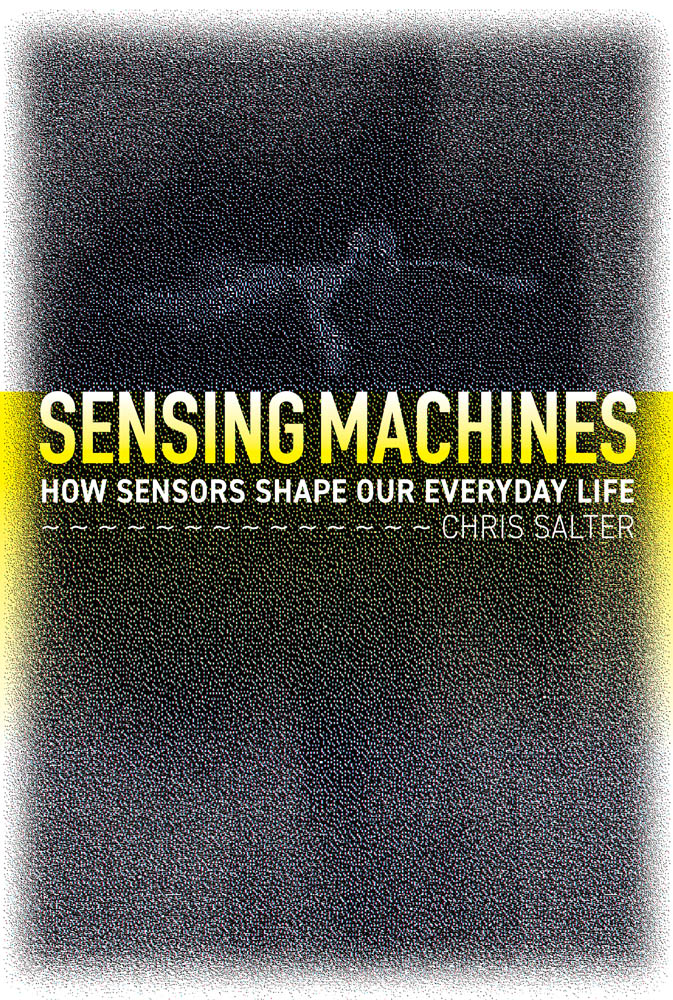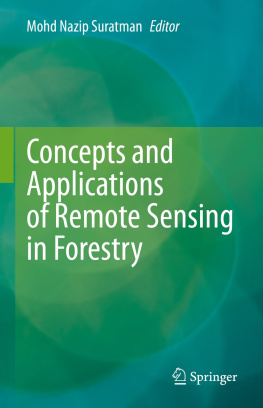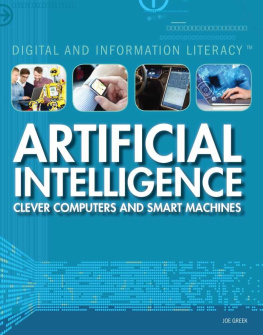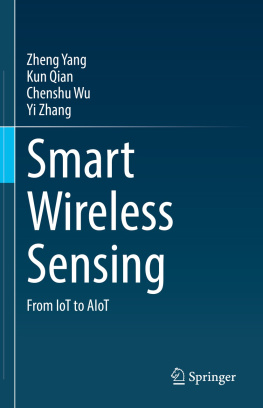
Sensing Machines
Sensing Machines
How Sensors Shape Our Everyday Life
Chris Salter
The MIT Press
Cambridge, Massachusetts
London, England
2022 Massachusetts Institute of Technology
All rights reserved. No part of this book may be reproduced in any form by any electronic or mechanical means (including photocopying, recording, or information storage and retrieval) without permission in writing from the publisher.
The MIT Press would like to thank the anonymous peer reviewers who provided comments on drafts of this book. The generous work of academic experts is essential for establishing the authority and quality of our publications. We acknowledge with gratitude the contributions of these otherwise uncredited readers.
Library of Congress Cataloging-in-Publication Data
Names: Salter, Chris, 1967- author.
Title: Sensing machines : how sensors shape our everyday life / Chris Salter.
Description: Cambridge, Massachusetts : The MIT Press, [2022] | Includesbibliographical references and index. | Summary: Sensing Machines showshow sensors and artificial intelligence transform our lives, fromdriving and playing games, to the ways we eat, sleep and dreamProvided by publisher.
Identifiers: LCCN 2021011597 | ISBN 9780262046602
Subjects: LCSH: DetectorsPopular works. | Electronic apparatus andappliancesSocial aspectsPopular works.
Classification: LCC TK7872.D48 S25 2022 | DDC 681/.2dc23
LC record available at https://lccn.loc.gov/2021011597ISBN: 978-0-262-04660-2
d_r0
Contents
The alarm rings at 6:00 a.m. sharp. The clocks built-in atomizer perfumes the air with scent and makes wireless contact with the wrist tracker you wore during sleep. Based on how much you moved and snored during your last six hours of hibernation, a playlist is quickly assembled. While you shower, the blasting strains of Madonna, Rihanna, and Taylor Swift are heard. As you enter your kitchen, a smart speaker announces the temperature and asks if it should turn on the espresso maker, turn off the hall light, and adjust the toaster settings.
You look at your phones newsfeed. The state of the world on the other side of the globe while you were dormant flashes by. Singapore is requiring its 5.7 million citizens to download a contact-tracing smartphone app to monitor crowd proximity. China is deploying delivery drones armed with thermal sensors, microphones and speakers, ultrasonic emitters, and disinfectant atomizers to enforce the worlds biggest quarantine against a newly emerging supervirus. Over the Indian Ocean, radar sensors are strapped onto 169 albatross to detect illegally operating fishing boats.
You scroll. Accusations that your new furniture is sending names, IP addresses, and persistent identifiers to third-party marketers. Plans from a Silicon Valley corporation to turn abandoned US suburbs into smart cities called CleverZones, which have been derailed by community activists who claim the new urban utopia is a gigantic data collection machine. A news item about how pulse oximeters that measure oxygen in the blood exhibit racial bias since they have problems projecting light through darker skin. A Reddit post that a Japanese game companys wearable hoodie that tracks temperature and brainwaves to detect a players mood has been hacked, with data from millions of teenagers brainwaves stolen.
Your self-driving car provides that ever-more-important extra hour of work preparation during the endless commute. The front door opens upon approach. The custom-installed AI system scans your pupils and adjusts the climate control and the loudness of the financial news blaring from the digital sound system based on your nervousness.
As the car pilots through the streets and onto the overcrowded expressway, your smart watch buzzes and beats on your wrist, one email flooding in after another. A sea of scrolling numbers and graphs animates the watchs face: heart rate; respiration; sweat levels; NASDAQ rises and falls; DMs from friends; temperature, air pressure, and moisture readings. At one point, lost in a daydream, you briefly gawk at a billboard in the near distance advertising web-based security services. Moments later, ads for security services pop up in your browser.
At work you glare into the screen for the next hours, only interrupted by lunch DoorDashed to your desk. The day passes. The colored mood lighting in the office seamlessly shifts from warm to cold based on how long you occupy your chair and the sequences you type. Every click of the keyboard and movement of the mouse is captured and fed back to you in the form of vibrations on the skin from the smart watch when you miss your benchmark. Online consumption breaks the monotony of contracts, emails, spreadsheets. You download an app that tracks how long it takes you to make decisions in the supermarket, purchase a new fitness tracker, update a social media feed to enable others to locate you. Briefly logging into a banking website during a break results in a strange glitch: the cursor suddenly vanishes during the session.
Some eight hours later, after the routine flurry of calls and online meetings with far-flung project teams in distant locales, a rhythmic pattern pulsed from your watch comes through from a friend youll soon meet. Before rendezvousing at the gallery, you go for a run to discharge your daily stress. The exercise is punctuated by your smart watchs continual readout of your steps, breathing, and heart rate. As you change your running speed, the biometric sensors built into your earbuds adjust the rhythm and tempo of the electronic beats being piped into your ears.
After showering away your sweat, upon arrival at the newest immersive experience space (another one) with your friend, the gallery attendant places a clear wristband on the arm not occupied by your smart watch and smart disease-tracking armband. You meander through endless labyrinths of light and sound. In one place, a sign asks you to enter a narrow passage and stand in the center. As you follow the instructions, life-sized projections of animated creatures, floating characters, and abstract bursts of light swim on the walls. Colossal 24K, ten-billion-pixel projections of anemone-like flowers follow your movements as changing scents are diffused from the walls and the floor.
Hunger takes over. The new experience restaurant is waiting past the gallery exit. The gastronomic journey is designed to last three hours, and the attendant scans you and your friend to gather data to customize the meal. You are paraded through a series of different rooms, one for each course. Cocktails arrive that steam and smell. Tastes extracted from now-extinct flora and fauna are served up as foams, sprays, and spheres. The main courses appear in a space plunged into total darkness, with each dish accompanied by tactile and sonic signatures. Dessert arrives in another space hung with mammoth plastic strawberries and watermelon slices and flashing videos on a dozen wall-mounted screens. Liquid nitrogentreated ice cream. Popsicles wrapped in gels. A one-meter-tall Manchego cheesecake pumped with air closes out the gastronomic overload.
Dancing is finally on the agenda, in the accompanying club housed in the bowels of the gallery. Your wristband allows entrance. You dance in thesweating crowd; the floor beneath you palpitates, changing color and rhythm with your moves. Moving lights in the ceiling zero in on different groups of dancers. Their tracked wristbands light up in dozens of colors that pulse and glow in sync with the DJs rhythms. The air is tinged with haze and smoke, the afterimages of strobe lights and the pounding beat. Ecstasy after the long lockdowns.
Next page







![Chris Skinner [Chris Skinner] - ValueWeb: How fintech firms are using bitcoin blockchain and mobile technologies to create the Internet](/uploads/posts/book/119678/thumbs/chris-skinner-chris-skinner-valueweb-how.jpg)

